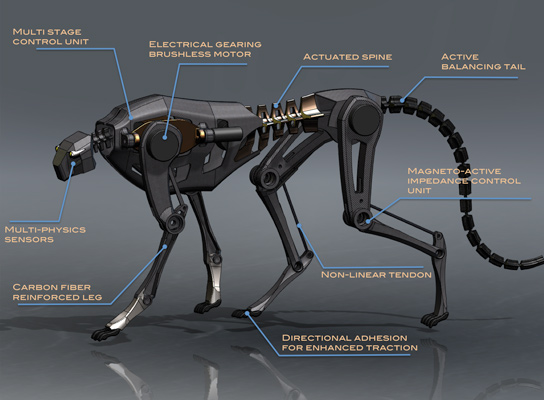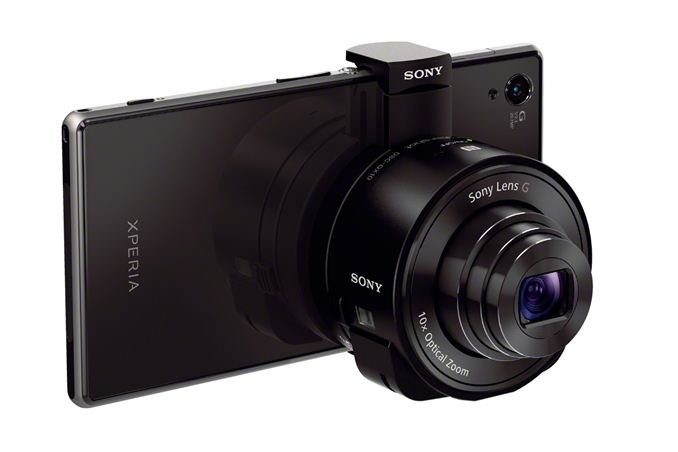Best 5 techs of 2013
2013 is almost over, sadly. No more worrying about the future because the future is here. So what can we say, with the impossible to ignore degradation of the Syrian situation, especially with the cold folding in to the citizens. Politics aside though, let's look at what technology can do for humanity, positively that is.
It is especially hard for me to pick the best 5 technologies that were invented this year that are not all software, are not video games and are not associated with military purposes, which are destructive. We want something that everyone can look forward to. Without further ado, let us begin.
First and most importantly, the HyperLoop. A simply genius, safer, and effectively more efficient than any other transportation system. It is the magic of physics come to life. It has been my - and many other physics enthusiasts' - dream to see an alternative way to move around this planet which uses magnets and does not have contact friction force with a physical, solid surface. I'm glad someone took the idea out of NASA's selfish use and decided to put it for the good of the people. By the idea I mean the repelling magnets, but locomotion which has a pipe for air pressure maintenance feels like being inside a giant optic fiber, which is a hot topic that didn't even flourish enough to begin to decline.
Sony Camera lens
Namely the QX10 and QX100, these lenses have much more potential than all the other gadgets that I am fond of, yes, including the fact that the Google Glass would replace your Bluetooth headset, your headphones, your Siri, and your medical glasses (if you wear one) plus, it looks like the video games with the HP bar or time at the top edge of your view. But guess what, after a lot of brainstorming, the QX10-100 feature a lot more potential. They are useful in making sure nobody sees you when recording them? Not really the most noble reason, but there is more than what meets the eye. They can potentially give your old and now useless phone some use to carry around. Some of us still carry the old phone to work/street while keep investing in our tablets, which stay at home. I know it sounds weird but I saw many examples of people like that. So these people's main trend is that they do not install many apps on their phones, just leave it for pictures of something cool in the street. But are 5, or 8, megapixels good enough when compared to a whopping 20MP? I think not.
I also think that the lenses are targeting more than just these suffering souls. The fact that these lenses are also supported for iPhones, old androids, NFC androids, basically means that Sony is trying to make the smartphone world more competitive. Which means they'll stop being cheap and make our phones replace everything in our lives. The idea is to open up a rivalry which will allow us people who buy more quality. First, the next gen of Samsung feature a 13MP instead of signature 8MP, while the Z1 featured 20MP. Why? Because the Lumia 410 has 40.1MP. Sure, Nokia is the pioneer here, but Nokia is now in the hands of Microsoft. Sadly, this company's quality is falling and lagging behind, despite it being the one to spread the love of computers around the world. That may not be a reason for people to buy it less, but the future for the Lumia series seems dimmer and dimmer.
Back to the lens, these little camera extensions will pack much more in the history of smart gadgets than the wearable ones. Which is why it made it high up in the list.
Now comes Japan's nursing robots. These robots have to be humanoid but are practical, include a lot of knowledge and ways to communicate. Sure, a conspiracy theorist will say that this is where robots take human's jobs and eventually take over, an optimist would say that it helps the elderly, but I would say that this has even more potential than whatever motive the Japanese engineers have intended it to be. Think of Africa, and some of its desolated areas and spreading diseases. How will all these be supplied? There are two ways to look at Japan's robots:
The quick look shows that in one year they can just put a language chip in these things and ship them to hospitals, where other human doctors exist so these robots don’t do all the judgment and assessment of the situation on their own.
But if you think for a little longer of a time period you will see that these robots can make civilizations rise, and probably save Africa's famine forever. If these robots have a wide knowledge base, and they have been taught to think and take decisions by themselves, nursing robots can be effective translators, teachers, builders, and well, nurses. No I am not following the conspiracy theory, but rather I am saying that, for example, this robot managed some human labour to build for themselves a decent hospital out of minimal exotic materials and optimal hygienic methods for the remote and isolated tribes that need to advance reach stability on their own. It is the opposite of war. It is the only hope for humanity before the robots' evolution even starts. It is … I think you get the point already.
Sure, it all looks like theories and possible potentials, maybe the inventors will not consider using their tech in such a way, but the technology exists and it is possible to be used that way. It could just be a conductor of sorts, too.
Number 4 is none other than what must be mentioned: The Google Glass. Not only is it packed and loaded with what we’ll most need in our real life, but it is also about to write a crucial debate as to how we view technology. On the outside, the Glass looks like a bad idea, or that it’s ahead of its time. In fact, it’s neither. It is only setting the tables of what is to come. We want this debate to happen now, in front of us, and it’s good that Google opened it up. Eventually, people will use the technology, but creating uproar about it is vital so that we:
- Know that we will always be spied on, not just by individuals
- Be able to use even better functionality, such as real-time translation
- Accept the creation of other technology, such as the humanoid robots.
- Always be able to be hands-free, changing the way we walk in the street,
- Convincing more people to go to the street (or discourage them, it will cause a change in people’s behavior regardless)
The features of the Glass itself, however, are another issue. The glass serves as a Bluetooth headset, Personal assistant, smartphone extension, voice-recognition, video camera, and basically just like the games with first person, making us feel like we are breaking the fourth wall of real life. Soon, something like virtual reality games might get stepped up into Google Glass. Here’s my interpretation:
You install the game. The game runs in background, searching for player. Another person with Glass, installing the game, appears. Both of you suddenly fight like JRPGs with EXP system. The fight is over, you both get EXP, which you can then use to show off in front of social networks such as Facebook. If you tag someone who has glass but doesn’t have the game installed, you’ll fight a “skeleton”, and still get EXP. Eventually, people think it is cool to share such an achievement, so more people are encouraged to go out to the street and socialize, getting EXP in the process.
But this whole story assumes that humanity now depends on these accessories long enough for developers to start switching to semi-VR gaming. Who knows what will happen next?
Last but not least, the technology with the most visible potential, the VIT duo’s smart wheelchair. Made by college students in India (Asians), they were prized for making a wheelchair based on voice recognition. You might be thinking that while helping the disabled is virtuous, many of the other technologies include voice recognition. What’s so fascinating about that? The point is that these people can depend on themselves, not having to depend on nurses all the time which can be costly. If this field of technology took attention, more disabled and elderly people (notice again that Japan is from Asia and they made humanoid nurse robots) can now be served, without the concern of money. There are just as many poor sick people as there are rich, which is why physiotherapy should at least be readily available for everyone. Again, if inventors pick up this field, they might make robots give time of taking pills, etc. Again I stare intently at the nurse robots from Japan and think that this wheelchair deserves respect because it isn’t humanoid but has potential, which the other one is a step forward but seems to be for public use, not something that someone can purchase, while the wheelchair is.
This was a very promising post, because as we welcome the new year by wishing to change, technology greets us with more things to think whether they are morally accepted or not. There were many things that I excluded out of the list, because they were only software, or were not even close to the final result we want. Many good robots were either military or unfinished, which, on the bright side, might make a better list next year. Play More Zelda!

Notable things that would make it to a top 10 list instead:

Notable things that would make it to a top 10 list instead:
- Samsung's folding smartphone, although that would make the list "top 5 smartphone potentiality", complete with what I think of smartwatches as well, but it really deserves high on any list.
- This year's hologram, or HoloParaMotion, wouldn't seem to impact our lives that much significantly but is amazing non-the-less.
- NASA's flexible bot seems very durable and all that, but it doesn't really help us humans as NASA always locks its knowledge out.
- The mantis robot over at www.mantisrobot.com . It even looks like those enchanted carriages in fairy tales, and is huge.









No comments:
Post a Comment